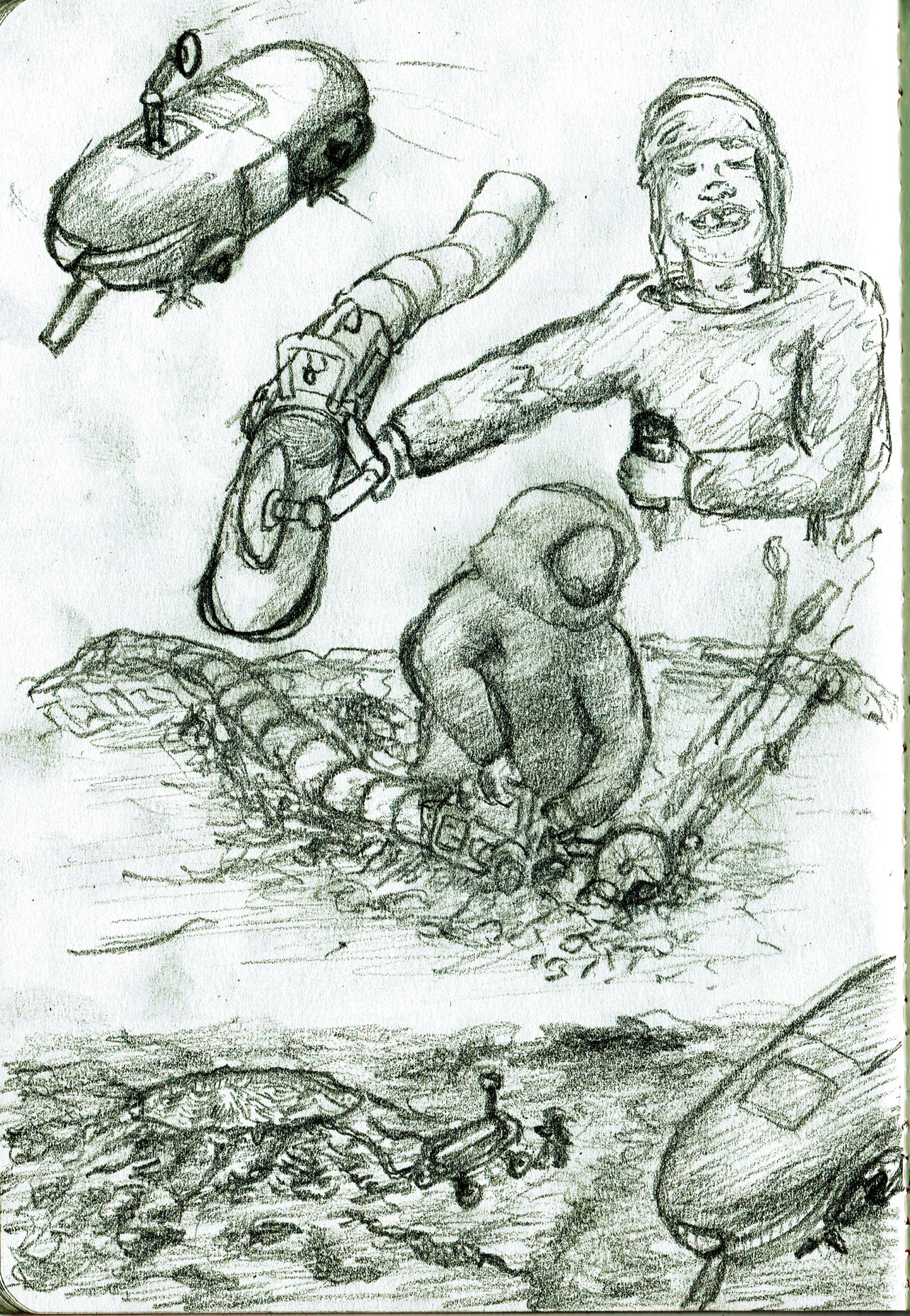HOME | DD
 kosmoknight — Exorancher
kosmoknight — Exorancher

#diatom #m4 #oc #ship #space #spaceship #spalax #spacefarmer #tardigrades #spacerancher #kosmoknight #exorancher #sciencefiction
Published: 2021-05-12 01:37:08 +0000 UTC; Views: 1242; Favourites: 10; Downloads: 0
Redirect to original
Description
An exorancher cuts through the surface ice after pre-heating the bio-pool he had left to develop over a period of several years. Once the surface is broken up sufficiently he will harvest the (hopefully thick) layer of bio-sediment which has accrued in his absence. His family ship, seen above and below (from pretty much the same angle lol), is an old T5-HI freight transport T5-FA-1AX, commonly referred to as a Spalax. Equipped with ample storage space and an admirably appointed stock living quarters, Spalax’ often undergo infamously extensive modifications in both function and comfort. In addition to reliability, Spalax are prized by exoranchers, settlers, small freight carriers, and remote forward assembly crews everywhere for their resilient pre-magnecon T5 surface grappler system which uses adjustable frequency manipulation of dense jells to achieve remarkable holding power on most surface types.
First, the exorancher chooses a concave natural feature at a site appropriate for the intended crop, taking into account a great number of factors, such as local meteor scouring, availability of light, and mineral composition. The feature is secured using bio-silicone or whatever materials are appropriate for overcoming any environmental challenges, often by an entire family. Then when the site is mostly arranged, a “Collie” (Coordinator of Organic Life Left in an Inhospitable Environment), is carefully calibrated, its instruments and appendages carefully placed in such a way that it will be able to maintain the proper ratio of chemicals, manage resulting reactions to maintain a liquid core, sample and regulate the crop, re-seed a ruined crop, and send regular reports that will reach the exorancher periodically, and hopefully allow the possibility of resolving unforeseen challenges by planning carefully and sending commands to the Collie, and onboard maintenance drones. Finally, the “soup” is pre-mixed, seeded with the appropriate “livestock”, and pumped into the prepared bed, where it will take anywhere from 6 months to 3 years to mature.
Bio-sediment, the main product of the largely independent association of exoranchers, consists of highly specialized Tardigrades, other Extremophiles, or modified Diatoms which are used extensively in the business of keeping people alive in space, whether processed as a super concentrated crop fertilizer, filtration medium, fuel, pesticide, or even an inexpensive supplementary source of protein. The nickname for cultivators of these organisms is a reference to the "exoskeletons," of their crops, and the particular call for their trade beyond the convenience of the planetary systems. The process was painstakingly developed over generations in isolated scientific colonies, but was ultimately considered too dangerous and unreliable to be a commercially viable supplement to planet-grown, or traditional purely synthetic methods of farming bio-material. Some potential was still seen however by certain enterprising individuals seeking independence, both for the relatively low start-up costs, and in the possibility of utilizing any atmosphere free area with sufficient gravity. After the initial revelation of viability, followed by a kind of "mud-rush" which was sadly characterized by many tragedies, the industry has largely stabilized, and established itself as a valuable asset tended by reliable family lines, who often pass on particular techniques, established bio-pool sites, strains of tardigrades &c, equipment and ships; down over many generations.
























